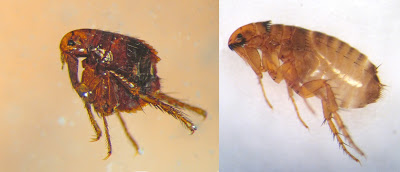The reality of coronavirus hit home to me last week when we realized that we couldn't follow through with our plans to offer a long-planned mosquito control class as part of our IPM Experience House class curricula. Texas A&M AgriLife and our local campus have moved to emergency mode, effectively shutting most training classes down for the foreseeable future.
In addition to IPM House classes, upcoming school IPM coordinator training courses are similarly affected. We are cautiously considering whether we may be able to offer classes in May and June.
It took me a while to grasp the significance of the coronavirus shutdown strategy; but for what it's worth, here are a few facts and links that turned me around this week.
- Understanding that the COVID-19 is not just another seasonal flu. It's a disease with 4 to 7X higher mortality rate than the flu and longer persistence in the environment than the flu (up to 3 days on stainless steel and plastic). Maybe worst of all, people (especially children) who catch it can be contagious without even realizing they are sick.
- We don't hear a lot about the plight of those who catch this virus and recover (not as gripping in headlines), but this is not a virus to take lightly. Early reports suggest the possibility of chronic lung impairment in some recovering COVID-19 patients.
- Yeah, it sounded bad in China, but look at Italy. In Italy, where health care systems are more similar to our own but where quarantine actions were slow to be adopted, a crisis situation developed with lightning speed in emergency rooms of afflicted areas. And if you think Italy's health care is inferior to our own, consider one statistic. In hospital beds per 1,000 people, Italy leads the US 3.2 to 2.8. Anyone thinking that our doctors and hospitals could do better in the face of overwhelming numbers of cases as in Italy would be wrong.
- Thankfully, there is a strategy behind the "stay at home" message we are hearing so much about. It's called flattening the curve, and it's based on the impact that self isolation and social distancing can have on the speed of spread of COVID-19. While it may seem inevitable that some of us will get the virus, by reducing our exposure to others we can slow the rate of virus spread. And if we do this, we might be able to spare our health care system the tsunami of cases seen in Italy.
- Our country rightly invests billions of dollars each year in science and health care. It's time to listen to those smart folks who have dedicated their lives and their intellects to understanding health and illness and the spread of disease. They don't know everything, of course, but they know a lot more than us non-health professionals know.
So for all these reasons, I am working this week in an empty building with plenty of social distance around me. We use hand sanitizer, wash our hands regularly and stay away from large gatherings including, unfortunately, classes where we might otherwise be training some of you.
Let us pray for our communities and our nation, and look forward to celebrating a return to face to face interactions in a matter of weeks. Be assured that our IPM training classes will resume as soon as possible.


